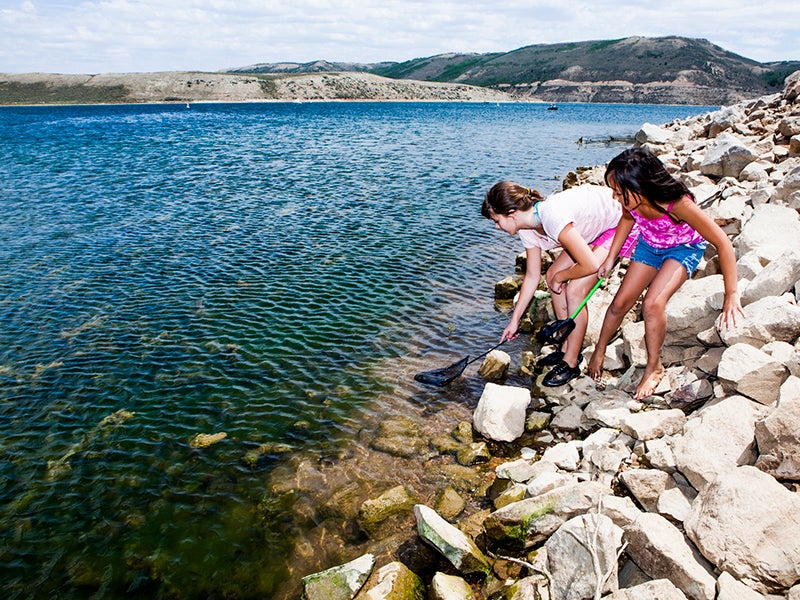Earthjustice Responds to Trump Executive Order, Urges EPA to Ensure Transparency and Public Input in Clean Water Protections
Letter to Administrator Wheeler objects to efforts to undermine authority of states and tribes to protect water quality under the Clean Water Act
Contact
Earthjustice, leading a group of 16 conservation and community groups, sent a letter to the U.S. Environmental Protection Agency today objecting to the Trump administration’s efforts to weaken clean water protections without public input. The letter comes in response to an executive order signed by President Trump on April 10 that seeks to undermine the authority of states and tribes to protect water quality under the Clean Water Act.
“The Trump administration is trying to unravel clean water protections behind closed doors, but we won’t let that happen,” said Jill Tauber, Vice President of Litigation for Climate and Energy at Earthjustice. “We will continue to stand up for transparency and the rights of communities to protect their water.”
Section 401 of the Clean Water Act empowers states and tribes to assess the impacts of federal projects on rivers, lakes, streams, and wetlands within their borders. President Trump’s executive order directs EPA to revise its guidance around Section 401, but it does not give the public an opportunity to review or comment on any changes.
“States and tribes have an essential role in protecting clean water, and that includes their right to say no to destructive fossil fuel projects that put their water resources at risk,” said Tauber. “Now more than ever, we must defend their authority against an administration hell-bent on implementing the fossil fuel industry’s agenda.”
Background on Section 401 of the Clean Water Act
The Clean Water Act is one of our nation’s bedrock environmental laws. Congress passed this popular law in 1972 to “restore and maintain the chemical, physical, and biological integrity of the Nation’s waters.”
To protect water quality, section 401 of the Clean Water Act creates a state-federal partnership, giving individual states the ability to review the impacts of many different types of federally-licensed projects on waterways and wetlands within their borders.
States have up to one year to issue, deny, or request more information regarding water quality and environmental impacts of a proposed project. Some projects have the potential to significantly degrade local and state water quality by, for example, cutting trenches through hundreds of waterways, damming major rivers, or destroying acres of wetlands. Because of the localized nature of these impacts, state agencies with local expertise are best suited to determine potential impacts.
States and tribes review hundreds of 401 certification requests annually, allowing for better protection of water resources for all uses, including drinking water, commercial, tribal, and recreational fishing, swimming, critical wildlife habitat, and outdoor recreation.
Below are some examples of projects where Sec. 401 of the Clean Water Act has played a critical role in protecting water quality.
Constitution Pipeline
As proposed, the Constitution Pipeline would have cut a 100-foot wide swath through four New York counties, crossed waterways 251 times, disturbed 3,161 linear feet of streams, destroyed or degraded at least 95 acres of wetlands, and stripped the area of thousands of acres of trees. During its review of these impacts, New York State’s Department of Environmental Conservation determined that the pipeline company failed to meaningfully address the project’s profound water resource impacts. This failure led to the state’s decision to deny the 401 certification, which the U.S. Court of Appeals for the Second Circuit upheld in August 2017. Learn more.
Photo courtesy of Nicholas A. Tonelli
Fall Brook in Susquehanna County. The Constitution Pipeline and access roads will disturb hundreds of acres of land and will cut across forests, watersheds, and special protection waters.
Millennium Coal Terminal
In 2017, the Washington Department of Ecology denied a 401 certification for a proposed coal export facility on the banks of the Columbia River. The proposed terminal would have been the largest coal shipping terminal in North America, handling up to 44 million metric tons of coal annually. Sixteen additional mile-and-a-half long coal trains per day would have traveled through cities and towns between the Powder River Basin in Montana/Wyoming and Longview, Washington. During its review, Ecology found that the company failed to provide enough information to ensure that water quality standards would be met and detailed impacts including harm from more than 1,600 additional large vessel trips through the Columbia River estuary and harm to Tribal fishing access. Learn more.
Alex Butterfield / CC BY 3.0
Longview in Cowlitz County, WA, the proposed site of the coal export terminal
Conowingo Dam
The Conowingo Dam and Reservoir is a major hydroelectric operation owned and operated by Exelon Generating Company on the lower Susquehanna River, just north of its confluence with the Chesapeake Bay. As part of its process to obtain a 50-year federal operating license, Exelon must first get a 401 water quality certification from Maryland. Maryland’s Department of the Environment certified the renewal with special conditions that require Exelon to reduce the sediment and nutrient pollution that flows from the dam and associated reservoir into the lower Susquehanna River and the Bay. Learn more.
Terra – MODIS / NASA Earth Observatory
[Move
bar ↔ sideways]
This dual-image comparison shows the thick sediment that clogged Chesapeake Bay in the aftermath of Tropical Storm Lee. The left image shows the bay in its normal condition on Aug. 23, 2011. The right image shows the mud and debris pouring into the bay several weeks later, on Sept. 13.

About Earthjustice
Earthjustice is the premier nonprofit environmental law organization. We wield the power of law and the strength of partnership to protect people's health, to preserve magnificent places and wildlife, to advance clean energy, and to combat climate change. We are here because the earth needs a good lawyer.